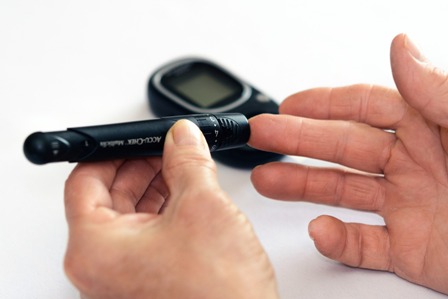
Southampton doctors are trialling the safety and accuracy of a device that can be worn for up to three weeks that tests and records children’s glucose levels minute by minute.
Known as the ‘Freestyle Libre’, the device is inserted into the back of the arm and measures the glucose (sugar) level once a minute in children with diabetes. Currently, the device is safe to wear for up to two weeks.
The trial, led by Dr Nicola Trevelyan, clinical lead for Southampton’s children and young people’s diabetes service, is now testing whether the device is safe and accurate in patients over a three week period.
It’s hoped that using the device over a longer time period will reduce the need for traditional finger prick blood tests, reduce the frequency of hospital visits for patients and increase its cost-effectiveness.
Monitoring blood glucose levels
Diabetes is a serious long-term condition that causes a person’s blood sugar level to become too high. Currently around 35,000 children are living with diabetes in the UK.
With no cure for the condition, treatment aims to keep blood sugar levels as normal as possible to control symptoms and prevent further health problems related to high blood sugars.
Patients often use finger prick testing multiple times a day to measure their blood sugar levels. This involves pricking the finger and testing the blood manually on a handheld device.
Making it easier for patients and parents
The Freestyle Libre works in two parts. A small probe inserted into the back of the arm, covered by a patch the size of a two pence piece, monitors and records glucose levels each minute and stores the data for eight hours at a time.
Data from the patch is then manually read on a small scanning device which relays what the glucose level is, if it is stable, rising or falling and what the glucose levels have been for the preceding eight hours.
The device can be scanned and read through thick clothing and bed clothes, making the process less invasive than traditional finger-prick testing. This also speeds up the glucose testing process and makes it more accessible for parents.
Children may find themselves finger-prick testing between eight and 20 times per day which is time consuming and painful. Wearing the device can reduce finger prick testing by 80%.
It also causes no limitation for children, who can run, play, swim and shower in the device without needing to remove it.
“We understand not only how hard it is to live with diabetes, but also how hard it can be to live with someone with diabetes,” explained Dr Trevelyan.
“Kids were born to push the boundaries of what is possible but for our patients, this can be difficult when they have to constantly worry about what their blood sugar is doing.
“Keeping the device on for three weeks would definitely reduce the amount of time they spend finger-prick testing, which gives them more time to do what they want to.”
“Anything that we can do to make their journey with diabetes easier has to be a good thing.”
The trial will test the accuracy of the device between weeks two and three by comparing recorded data from the monitor and blind finger prick tests throughout the day.
If the device proves accurate, it is hoped that the usability time will be extended for all patients currently using the device.
Posted on Thursday 26 April 2018